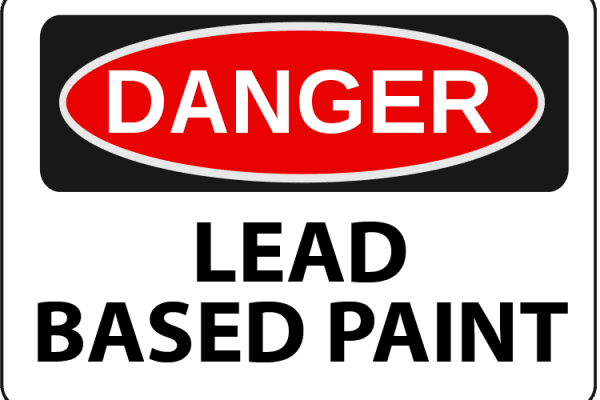Renovation projects can substantially improve the value of a property, and are often a necessary part of routine maintenance. When considering a renovation project, many building owners start with a visit to the city’s building code department to get approval on plans.
With that done, many property owners consider their due diligence to be complete. Because local and state codes often don’t mention environmental concerns, owners may think that they have no further liability.
Unfortunately, this is a dangerous assumption. Even when state and local environmental regulations don’t exist, federal regulations are often in place, and they apply in circumstances you may not be aware of. Here are the top five things you need to know.
#5: PCBs May Not Be Your Problem Now… But They Can Become Your Problem
PCBs may be the most commonly overlooked environmental risk factor in renovations. It’s easy to ignore because the typical regulatory concern has to do with OSHA worker safety, as well as proper disposal. Generally, this concern is the responsibility of subcontractors, who should know how to recognize and properly handle PCB-containing products. Any risks to their workers are their liability.
However, if one of your subcontractors fails to properly recognize and remediate PCB-containing materials, such as may be present in lighting ballasts and transformers, carcinogenic oils may be left behind and create unsafe conditions for your tenants. It then becomes your problem. Many components will be labelled “Non-PCB”; if that label is not on your electrical component, then you need to assume that PCBs are present.
For more information on safe renovation and abatement of buildings with PCB-containing materials, visit the EPA’s guide here.
#4 Lead Paint Matters…Even If Your Building Doesn’t Have Children-Occupied Areas
Under EPA guidelines, renovations on child-occupied buildings constructed before 1976 must undergo specific lead paint identification and abatement procedures. Everyone who owns or runs daycare facilities, medical facilities, federally assisted housing, and schools knows this. What you may not know is that some industrial applications of lead paint continue to be used today, and even adult-only buildings can fall foul of OSHA regulations if lead paint dust is allowed to accumulate.
Like PCBs, this is a responsibility that belongs primarily to your subcontractors. However, if they mess it up, it will quickly become your problem. Check that any subcontractors who will be responsible for demolition or sanding of painted areas carry appropriate certification for lead paint abatement, and practice proper containment of construction dust when working in high-risk areas.
#3 Mercury in Flooring Used to Be a Thing…And Mercury in Fixtures Still Is
There was a period between 1960 and 1980 when mercury was used as an additive to certain athletic flooring applications. It contributed to a resilient, rubber-like surface that was touted as a vast improvement over old wood floors. However, it also contributed to indoor air pollution that plagues owners of athletic facilities even today.
If your building contains athletic facilities that were built or renovated during these two decades, odds are you may have a hazardous material issue that must be addressed. Tearing out these old floors releases mercury fumes that create dangerous working conditions for anyone in the building, if not properly contained. Read more about what to do with mercury-containing flooring here.
Even if your building does not contain athletic flooring, odds are it does have some mercury-containing fixtures that must be properly identified and disposed of to avoid creating hazardous work conditions. Typical examples would be fluorescent light bulbs and thermostats. It’s good practice to ensure that your subcontractors are aware of the risk and know how to handle it.
#2: You Need An Asbestos Survey, Yes, Even if the Building is Recent Construction
More than any other misconception in regard to environmental liability, this is the one we hear most often: “The building is only five years old, so we are not required to complete an asbestos survey.”
This misconception arises from the fact that many applications of asbestos were banned by the EPA in the 1970’s. But the truth is, many other construction applications of the substance continue to be both legal and commonly used. As a result, the Clean Air Act, specifically under the National Emissions Standards for Hazardous Airborne Pollutants, requires that an asbestos survey be performed prior to any renovation or demolition activity, with no exceptions based on age of construction.
Some states and counties have additional, more restrictive regulations regarding asbestos, so it’s important to check with your local and state authorities. Regardless of whether your municipality has specific requirements, you are still bound by the federal regulation, and subject to fines if you fail to perform the required due diligence.
Read more on asbestos myths and realities.
#1: A Competent Hazardous Building Materials Assessment Is a Really, Really Good Idea
As you can see, even recent construction can contain hidden environmental hazards that can become a regulatory nightmare if improperly handled, and it’s difficult to know what your renovation might encounter along the way. Improperly disposed chemicals, hazardous materials accumulations inside building systems, and undiscovered mold growth are all possibilities in addition to those listed above. Renovation projects that run into unexpected environmental hazards can quickly get out of hand from both a cost and liability perspective.
A competent hazardous building materials assessment will identify potential hazards in your building, and allow you to develop an accurate budget for appropriate remediation, before you begin tearing down walls.
If you’re planning a renovation project in the near future, don’t leave this up to chance. Contact a qualified hazardous building materials expert today, and give yourself peace of mind.






